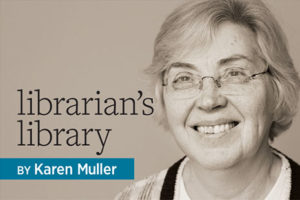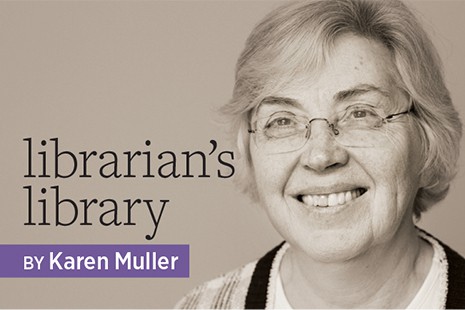
As I was gathering books for this column, I saw a title that needed reshelving: The Information-Poor in America, by Thomas Childers (Scarecrow, 1975). Yes, it was written a whole library career ago, but it shows how libraries continue to be the public institution able to address the information needs of everyone. These selections offer current practices and tools for librarians seeking to eliminate barriers to information access.
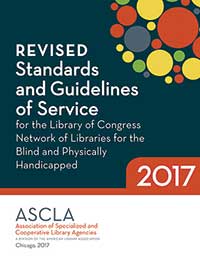 Let’s start with Revised Standards and Guidelines of Service for the Library of Congress Network of Libraries for the Blind and Physically Handicapped, 2017, from the Association of Specialized and Cooperative Library Agencies (ASCLA), a division of the American Library Association (ALA). Developed by the Library of Congress and ASCLA, these supersede the 2011 standards. Key changes involve moving from guidelines to standard statements on staffing levels and physical space requirements; adjustments that help administrators meet service-driven levels of staffing; and the addition of tools to help defend budget needs. A glossary and appendices with a listing of relevant federal laws and ALA policies is included. ASCLA, 2017. 44 P. $45. PBK. 978-0-8389-8974-6.
Let’s start with Revised Standards and Guidelines of Service for the Library of Congress Network of Libraries for the Blind and Physically Handicapped, 2017, from the Association of Specialized and Cooperative Library Agencies (ASCLA), a division of the American Library Association (ALA). Developed by the Library of Congress and ASCLA, these supersede the 2011 standards. Key changes involve moving from guidelines to standard statements on staffing levels and physical space requirements; adjustments that help administrators meet service-driven levels of staffing; and the addition of tools to help defend budget needs. A glossary and appendices with a listing of relevant federal laws and ALA policies is included. ASCLA, 2017. 44 P. $45. PBK. 978-0-8389-8974-6.
 The Librarian’s Guide to Homelessness: An Empathy-Driven Approach to Solving Problems, Preventing Conflict, and Serving Everyone, by Ryan J. Dowd, begins by dispelling myths about homelessness (see excerpt on p. 54). Dowd, who has worked in homeless shelters since his teen years, analyzes what empathy is and why it is an effective place to anchor service to homeless persons. He then reviews concepts of empathy-driven services that get people to follow rules without resorting to punishment. Following a discussion of tools to implement empathy-driven services and behaviors to avoid, Dowd discusses how staff can develop these skills. He also presents situations that library staffers may face and empathy-driven enforcement methods that they can employ. ALA Editions, 2018. 264 P. $57. PBK. 978-0-8389-1626-1.
The Librarian’s Guide to Homelessness: An Empathy-Driven Approach to Solving Problems, Preventing Conflict, and Serving Everyone, by Ryan J. Dowd, begins by dispelling myths about homelessness (see excerpt on p. 54). Dowd, who has worked in homeless shelters since his teen years, analyzes what empathy is and why it is an effective place to anchor service to homeless persons. He then reviews concepts of empathy-driven services that get people to follow rules without resorting to punishment. Following a discussion of tools to implement empathy-driven services and behaviors to avoid, Dowd discusses how staff can develop these skills. He also presents situations that library staffers may face and empathy-driven enforcement methods that they can employ. ALA Editions, 2018. 264 P. $57. PBK. 978-0-8389-1626-1.
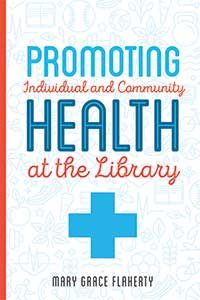 Understanding options for health care is a challenge; being able to do so is the core of health literacy. Promoting Individual and Community Health at the Library, by Mary Grace Flaherty, details the shift from the authoritative-provider model of the early part of the 20th century to our current patient–provider partnership and consumer health information model. It examines the increase in provider and insurance options and the delivery of health information in libraries, particularly public libraries. Flaherty reviews standards of service for providing reliable, authoritative, and trustworthy resources and offers options for health information programming. She addresses the importance of working with government agencies, social services providers, shelters, and senior centers to expand health information delivery. ALA Editions, 2018. 144 P. $50. PBK. 978-0-8389-1627-8.
Understanding options for health care is a challenge; being able to do so is the core of health literacy. Promoting Individual and Community Health at the Library, by Mary Grace Flaherty, details the shift from the authoritative-provider model of the early part of the 20th century to our current patient–provider partnership and consumer health information model. It examines the increase in provider and insurance options and the delivery of health information in libraries, particularly public libraries. Flaherty reviews standards of service for providing reliable, authoritative, and trustworthy resources and offers options for health information programming. She addresses the importance of working with government agencies, social services providers, shelters, and senior centers to expand health information delivery. ALA Editions, 2018. 144 P. $50. PBK. 978-0-8389-1627-8.
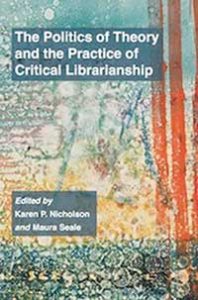 Before addressing the information-access deficit, let’s look at a philosophical analysis of why we need to—and how the impetus to do so has become embedded in our professional psyche. The Politics of Theory and the Practice of Critical Librarianship, edited by Karen P. Nicholson and Maura Seale, is a set of 14 essays on critical librarianship that bridges the gap between practice and theory, challenging librarians to support progressive, socially just service. These are not easy essays, but they can help practitioners understand how the status quo may exclude library users in areas from instructional services to shelving systems. Library Juice Press, 2018. 276 P. $35. PBK. 978-1-63400-030-7.
Before addressing the information-access deficit, let’s look at a philosophical analysis of why we need to—and how the impetus to do so has become embedded in our professional psyche. The Politics of Theory and the Practice of Critical Librarianship, edited by Karen P. Nicholson and Maura Seale, is a set of 14 essays on critical librarianship that bridges the gap between practice and theory, challenging librarians to support progressive, socially just service. These are not easy essays, but they can help practitioners understand how the status quo may exclude library users in areas from instructional services to shelving systems. Library Juice Press, 2018. 276 P. $35. PBK. 978-1-63400-030-7.
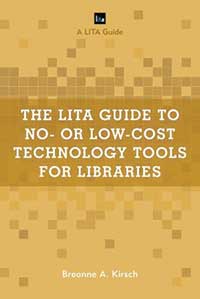 The LITA Guide to No- or Low-Cost Technology Tools for Libraries, by Breanne A. Kirsch, is a practical review of tech tools for instruction, collaboration, outreach, and marketing. Its relevance to this discussion is the “how.” These tools will enable even small libraries to offer some key services to patrons. Better yet, the criteria for selection includes adherence to privacy and accessibility issues. Rowman and Littlefield, 2018. 120 P. $35. PBK. 978-1-5381-0311-1. (Also available as an ebook.)
The LITA Guide to No- or Low-Cost Technology Tools for Libraries, by Breanne A. Kirsch, is a practical review of tech tools for instruction, collaboration, outreach, and marketing. Its relevance to this discussion is the “how.” These tools will enable even small libraries to offer some key services to patrons. Better yet, the criteria for selection includes adherence to privacy and accessibility issues. Rowman and Littlefield, 2018. 120 P. $35. PBK. 978-1-5381-0311-1. (Also available as an ebook.)
 Diversifying Digital Learning: Online Literacy and Educational Opportunity, edited by William G. Tierney, Zoë B. Corwin, and Amanda Ochsner, expands how we think about digital equity across diverse educational and socioeconomic contexts. The public library may offer the only online access for some members of a community, including schoolchildren, at a time when there is increased reliance on online instruction, digital homework submission, and machine-based testing. This book examines inequities in computer-science education, including career choices available as a result. Several more positive chapters investigate how online technologies better support the marginalized. On the whole, there is an effort to not look at the gap but at opportunities that help overcome barriers. Johns Hopkins University Press, 2018. 232 P. $44.95. 978-1-4214-2435-4.
Diversifying Digital Learning: Online Literacy and Educational Opportunity, edited by William G. Tierney, Zoë B. Corwin, and Amanda Ochsner, expands how we think about digital equity across diverse educational and socioeconomic contexts. The public library may offer the only online access for some members of a community, including schoolchildren, at a time when there is increased reliance on online instruction, digital homework submission, and machine-based testing. This book examines inequities in computer-science education, including career choices available as a result. Several more positive chapters investigate how online technologies better support the marginalized. On the whole, there is an effort to not look at the gap but at opportunities that help overcome barriers. Johns Hopkins University Press, 2018. 232 P. $44.95. 978-1-4214-2435-4.
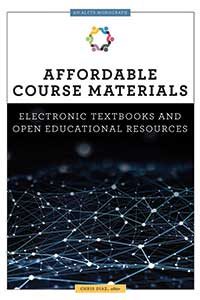 Textbooks can be a huge part of students’ budgets, and libraries have helped ease that burden for years by offering reserve rooms and other methods to access these books. Affordable Course Materials: Electronic Textbooks and Open Educational Resources, edited by Chris Diaz, is a collection of nine case studies from university libraries that offer models for providing access to digital collections for students, particularly in the face of mounting budgetary pressures on campus and public awareness of the cost of a college degree. The authors explore options offered through licensing, digital rights management–free materials, and ebooks, along with increased faculty engagement. ALA Editions, 2017. 160 P. $65. PBK. 978-0-8389-1580-6.
Textbooks can be a huge part of students’ budgets, and libraries have helped ease that burden for years by offering reserve rooms and other methods to access these books. Affordable Course Materials: Electronic Textbooks and Open Educational Resources, edited by Chris Diaz, is a collection of nine case studies from university libraries that offer models for providing access to digital collections for students, particularly in the face of mounting budgetary pressures on campus and public awareness of the cost of a college degree. The authors explore options offered through licensing, digital rights management–free materials, and ebooks, along with increased faculty engagement. ALA Editions, 2017. 160 P. $65. PBK. 978-0-8389-1580-6.

